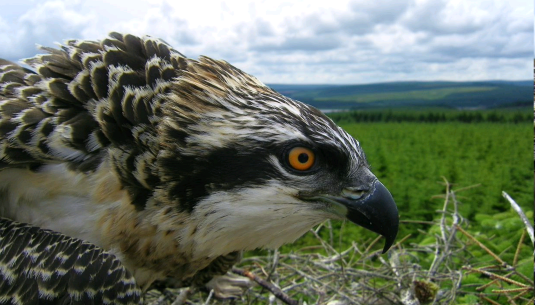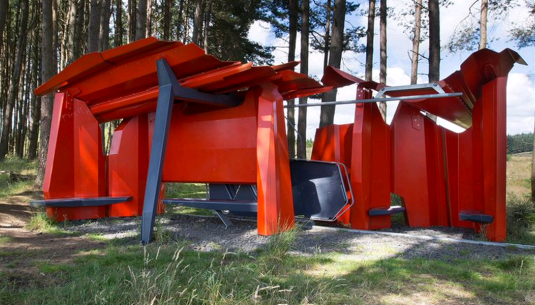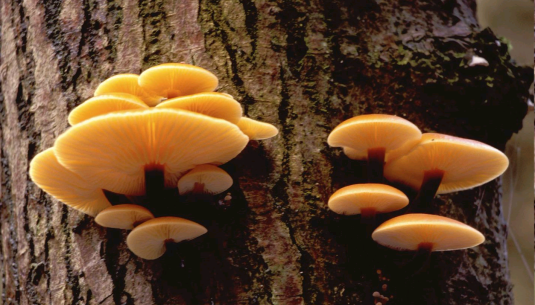
The Living Wild project received confirmation of its Heritage Lottery grant of £336,300 in September 2016; and the project began in earnest in October 2016 and finished in July 2019.
The aim was to animate Kielder Water and Forest Park’s amazing wildlife for visitors and residents, helping them enjoy, learn, share and immerse themselves in nature whilst also contributing to the long-term protection of the area’s special animals and plants. The project provided training to support nature champions capable of maximising the potential of Kielder’s wildlife to reconnect people with nature and tackle society-wide “nature-deficit disorder”.
The project developed skills in young people and boosted the local economy, encouraging more visitors and longer stays. The shared learning and collaboration delivered through this programme reinforced the ethos of partnership working central to the Trust’s values, building organisational capacity and resilience.
The project’s objectives
- Enabling more people of all ages and abilities to enjoy, experience and learn about the special wildlife and natural environment of Kielder Water and Forest Park
- Utilising the special natural environment of KWFP to attract more visitors who will stay longer, generating economic benefits to the local area
- Ensuring the protection of special wildlife and habitats through management of the environment and active visitor management and education.
For full highlights - please download the "Achievements" document on the right-hand side of this page.
Thanks to National Lottery players the project made a difference in the following ways:
- The creation of better digital awareness and remote access to Kielder’s wildlife through enhanced web content. Social media and PR consultants were commissioned to run campaigns to motivate new visits and lengthen visitor stays in and around Kielder. One very successful example was a Facebook competition called "One word", where followers were encouraged to share the one word which sums up Kielder for them. The competition ran for 3 weeks and reached over 33,000 people with 26,000 video views.
- The creation of a new exhibition at Tower Knowe visitor centre, with an interactive map of the Park, displays with wildlife information, interactive areas for children and digital elements including a forest management game. A new wild walk trail was created from Tower Knowe car park out to the peninsula with new interpretation.
- Bakethin Nature Reserve, is becoming a centre for wildlife watching and interpretation. We have way marked new wild walks, added a visitor welcome/orientation point and developed a new hide in partnership with Newcastle University School of Architecture. Along the wild walk to the hide there is an impressive chainsaw carved wildlife seat and a wild clearing area with educational features to help children explore the forest.
- Kielder Castle, is a hub for visitors looking to explore and discover nature and wildlife in the forest. New interpretation has been installed in the grounds of the castle, and a wild walk trail way-marked to help visitors explore different routes.
- Hawkhope to Belling – a way-marked wild walk route to Wave Chamber was created with a new interpretive panel
- We worked with local communities to interpret the flora and fauna of riverside, forest or countryside trails from Greenhaugh, Falstone and Stonehaugh villages.
- All the new wild walks and community trails now feature in a new walks guide. Printed copies are for sale in visitor centres and all routes are individually downloadable on this website www.visitkielder.com/play/explore/walking
- A series of 8 geocaches (modern day treasure hunting) are on site around the Park; and the wild walks are free downloads on popular walkers app View Ranger.
- Wildlife training sessions were organised for tourism businesses, front-line staff and members of the local community to encourage wildlife ambassadors in the Park able to inspire and orientate visitors. The very informative introduction to wildlife hand-out is available to download www.visitkielder.com/play/discover/wildlife-nature
- We enhanced Osprey Watch -extending the number of events, employing a seasonal osprey assistant and purchasing new equipment to improve the visitors’ experience
- Plashetts Rising - a look-out perch for ospreys and other birds (delivered in conjunction with Kielder Art & Architecture programme) was designed and developed with an ornithologist to ensure it works as a convenient resting place for all types of birdlife. The piece was installed in August 2018.
- We recruited and trained new volunteers in conservation and visitor engagement which has increased overall capacity and encouraged long term community involvement in volunteering. These include protection and interpretation of nesting ospreys and wildlife and osprey wildlife cruises.
- Year-round events, activities and learning programmes were encouraged and promoted to make the most of the wildlife and outdoors. Activities included family bushcraft, den building, night safaris, red squirrel safaris, bat walks and wild food foraging and cooking.
- We organised two Wild at Kielder festival events, held in May 2017 and 2018 – which offered wide range of outdoor and wildlife themed activities and events. The lessons learnt will be used to plan for future events.
- We supported two Young Ecologists events to encourage 13–18-year-olds with a keen interest in natural history to learn about the science of ecology.
- An education consultant was commissioned to assist with reviewing Kielder’s education offer and determine schools’ requirements. A teachers twilight session took place in November 2018 and enhanced school visits information was added to this website.



